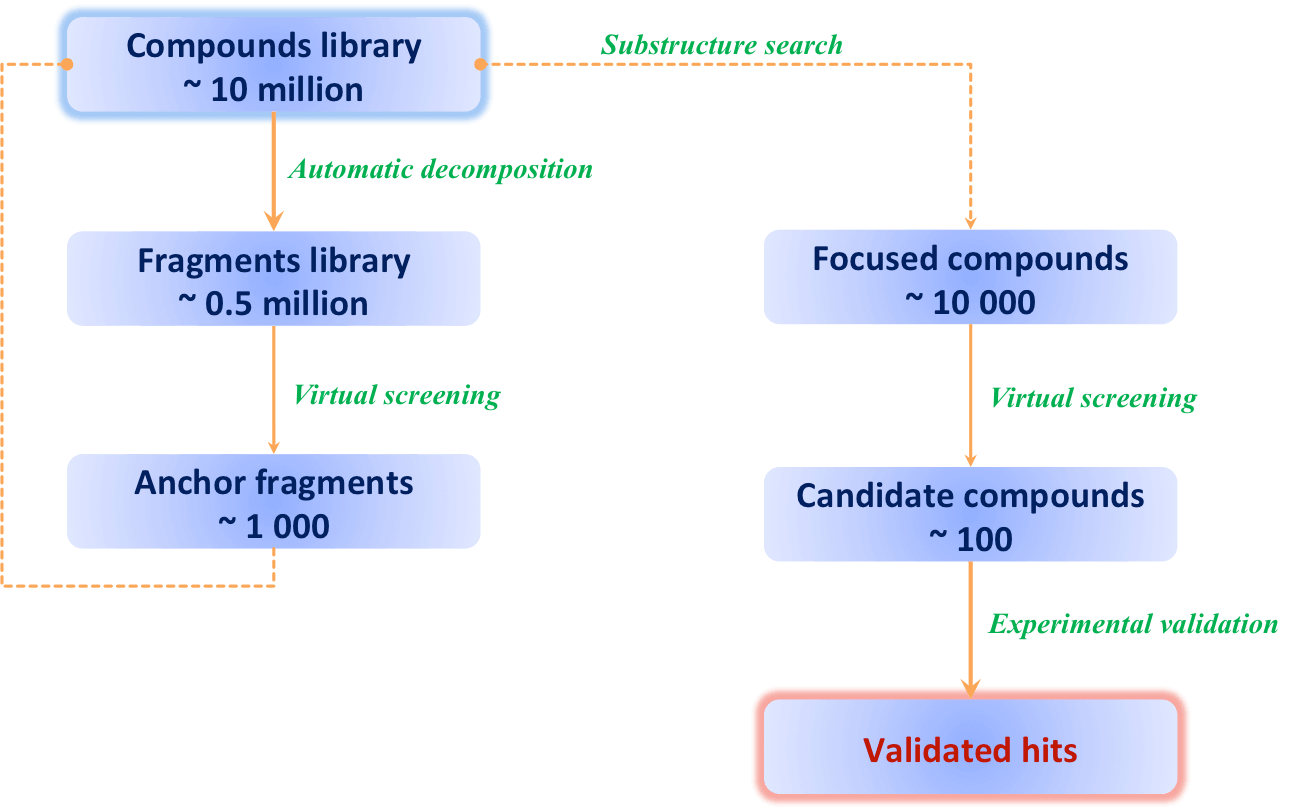Hit Identification

Illustration of fragment-based high-throughput virtual screening cascade
Computer aided drug design (CADD) has become an efficient tool in drug discovery, from hit identification to lead optimization and beyond. With an innovative approach in virtual screening, a validated hit rate from 10% to 50% on a variety of drug targets has been achieved. The predicted binding modes have been vigorously confirmed by the X-ray crystallography. Several scaffolds have been advanced into promising lead compounds, which demonstrate early indications of efficacy on animal models.
Hit identification often starts from screening of a large compound library. The overall chemical space of small molecules is estimated around 1060! To date, the commercially available compounds have accumulated up to 10 millions, and the number is still rising. The in silico screening offers a sole solution for screening of such ever increasing library in a cost and time effective way. Nevertheless, given the inherent approximations in computations and extremely low hit rate of a library, virtual screening remains frustrating rather than encouraging.
Inspired by fragment-based drug design (FBDD), a novel fragment-based virtual screening (FBVS) approach using the proprietary fragmentation program LeFrag has been developed. In addition to the dramatic improvement in computational efficiency by orders of magnitude, the hit rate has been greatly increased due to the significant enrichment of bioactive chemical space.
Lead Optimization

Schematic illustration of lead optimization process
Lead optimization is the complex, iterative process of altering the chemical structure of a confirmed hit to identify an improved drug lead with the goal of progressing to a preclinical candidate. The path from hits to candidate selection can include many crossroads, where choosing the right science at the right time can determine a program’s ultimate success.
The leading-edge modeling platform and in-depth analysis of nearly half a million bioactive compounds enables:
- Improved probability of success
- Minimization of costs and cycle time
- Earlier, better development decisions
- Opportunities to translate findings from "bench to bedside"
Library Design

Activity-oriented design of screening libraries
Navigation through the enormous chemical space of small molecules to locate bioactives is not that different from finding an earth in the endless universe. Focusing on bioactive core fragments, it is possible to generate a special fragment library for the increasingly popular fragment-based drug design (FBDD), and ultimately high-throughput screening (HTS) libraries. The cheminformatics approach can be further applied to eliminate non-druggable compounds such as those with reactive moieties frequently known as PAINS.


